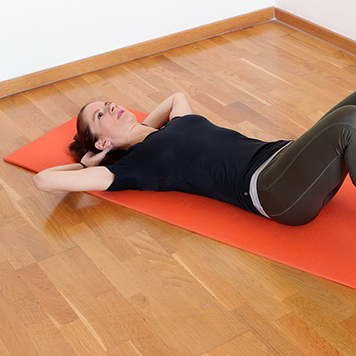What You May Not Know about Muscle Soreness

You just crushed a really hard workout. You increased your training load, or you stepped out of your routine and tried a new activity. You feel great—until you wake up the next morning, barely able to move!
Enter delayed onset muscle soreness, better known as DOMS. It's an acronym that athletes and fitness buffs wear with pride.
When Does DOMS Occur?
As its name suggests, "DOMS is muscle soreness that becomes evident six-to-eight hours following activity, peaking around 24 to 48 hours post-training," says Jon Mike, a Certified Strength and Conditioning Specialist, NSCA-certified personal trainer and PhD candidate in Exercise Science at the University of New Mexico. While the symptoms will often start to diminish at about 72 hours, "the precise time course and extent of DOMS is highly variable," Mike says.
DOMS is most pronounced when you introduce a new training stimulus—a new activity, increased intensity or higher volume workout—or if you are new to physical activity in general.
"Your body is making adaptations to better prepare your muscles to do that activity again," said Lauren Haythe, certified Kinesis Myofascial Integration Practitioner and yoga teacher.
That's why on Day 1 at the gym, after doing squats or lunges with 10-15 pound weights, you can be brutally sore the next day. Haythe added that this discomfort shouldn't last too long as your workouts continue, thank goodness!
"But, as you continue on, you can build up from there, and you won't be so sore," Haythe said.
Symptoms of Muscular Soreness
While all kinds of muscular contraction can cause soreness or eccentric contraction, where the muscle lengthens as it contracts, it is most often associated with DOMS. This includes movements such as running downhill, lowering weights or lowering down into a squat or push-up position. There is also some evidence that suggests upper body movement creates more soreness than lower body exercises.
Muscle discomfort is the most common characteristic of DOMS, but there are other symptoms. According to the American College of Sports Medicine (ACSM), these may include:
- reduced range of motion and joint stiffness,
- local swelling and tenderness,
- and diminished muscle strength.
These symptoms appear gradually following exercise. This is not to be confused with acute pain that may arise during physical activity.